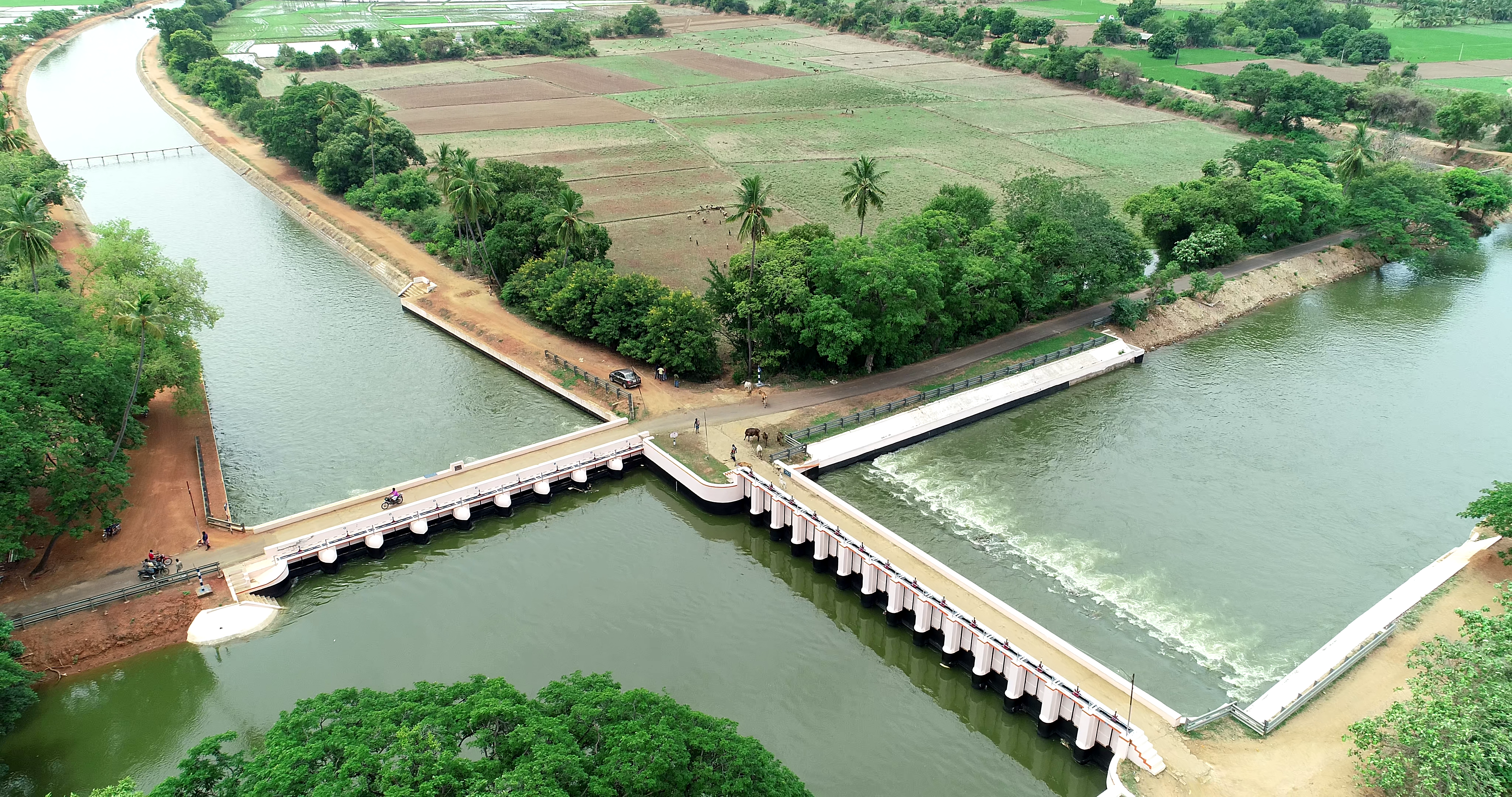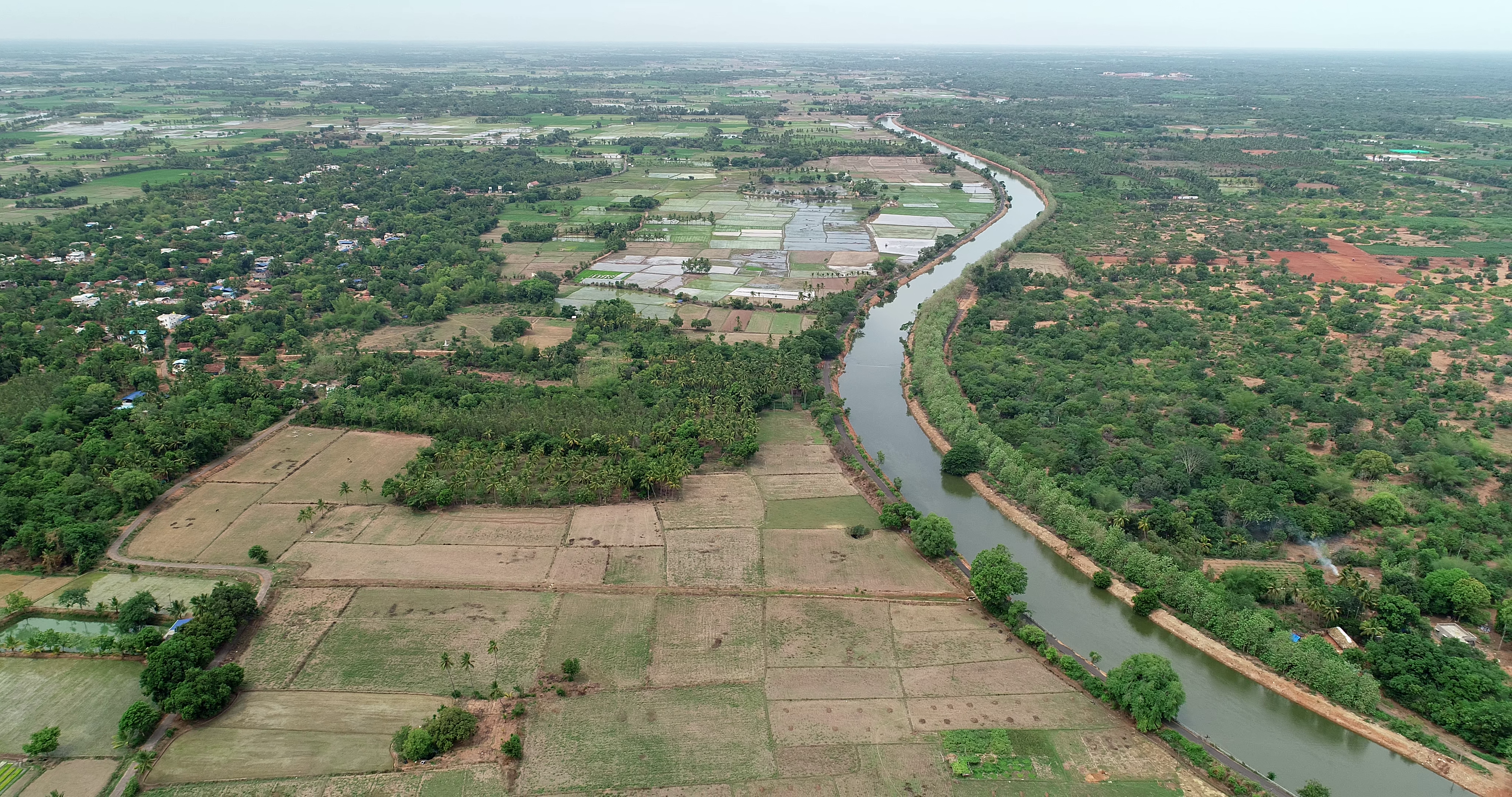Thanjavur: While most of us are familiar with Tamil Nadu's Kallanai dam that exemplifies the architectural skill of Karikaalan, the famed King of Early Chola dynasty, very few know the existence of the Kallanai canal that can be fittingly called Thanjavur city's River Thames.
This is the story of the man-made river, the Kallanai canal, that split as the fourth river from the Kallanai dam and flows into the streets of Tanjavur.
In 1834, Sir Arthur Cotton, the British Engineer hailed the architect of the country's finest irrigation projects including the ones across River Godavari, decided to build a dam in Mettur but the Kingdom of Mysore objected.
After initial setbacks, the construction of the dam commenced in 1923 with the approval of the Kingdom of Mysore. This time, Sir C.P. Ramasamy Iyer, the Diwan of Travancore who hailed from Thanjavur, negotiated with the Kingdom of Mysore at the request of the farmers of Tanjavur.

Although Thanjavur is a fertile land due to the Cauvery irrigation system, the southern upland of the erstwhile Thanjavur district had always been at the mercy of rainwater. Sir. C. P. Ramasamy Iyer wished to split Cauvery so that its branch flows into the south of Thanjavur.
Subsequently, he planned to build a canal from Kallanai. Colonel W. M. Ellis, who designed the Mettur dam, gave form to Sir. C. P. Ramasamy Iyer’s plan.
Colonel W.M. Ellis designed the Kallanai canal to flow through the streets of Tanjore similar to the Thames River that flows through the streets of England. The construction of the canal commenced in the same period as that of the Mettur dam and was completed in the year 1934.

This man-made river begins its journey from the Southern part of the Kallanai. The canal could have been constructed at Alakudi and made to flow towards the South without entering Thanjavur. But, at the behest of Sir. C. P. Ramasamy Iyer, this river touches the moat of the Brahadeeswara Temple and flows through the city.
The architecture of this great achievement of human endeavour, that flows for 149 km from Kallanai till it meets the sea at Mumpalai in Thondi, Puthukottai, is a pinnacle of human imagination. While all river currents generally flow towards a slope by nature, this man-made river is designed to flow from a slope towards an uphill terrain.
Read: NEET quota row: Tamil Nadu governor faces wrath of political parties
This feat is achieved by meticulously designing the river to flow evenly in uphill and downhill using overhead structures and tunnels. The river also has provisions to prevent sewage water contaminating the river. Similarly, the 'drops' have been set up in 550 places across its length to drain excess water and keep the flow at a constant level.
The Kallanai canal that was built for agricultural irrigation has not failed its purpose to carry water to the irrigation ponds. The design is in a way that the excess water from the pond returns to the canal again.
Saamy Natarajan, the State Secretary of the Agricultural Association said that 2.5 lakh acres of land in the southern regions of Thanjavur, the taluks of Orathanadu, Pattukottai and Peravurani and Aranthangi taluk, Manamelkudi and Nagakudi in the district of Puthukottai are being irrigated by the water.
Regions like Pattukottai, Peravurani and the southern parts of Thanjavur, that were once rainfed lands turned into paddy fields after the Kallanai canal came into existence. Kannan, a farmer, recalls that during a time of water scarcity, farmers switched to coconut farming with the help of the groundwater that was made available by the canal.
The Kallanai canal, which has been carrying around 4000 cubic feet of water for the past 85 years, has now become weak at its banks. To carry forward its legacy and keep Southern Thanjavur belt prosperous the government should step in to renovate this ageing canal.
Read: Tamil Nadu students build lightest satellite in the world, to be launched soon



